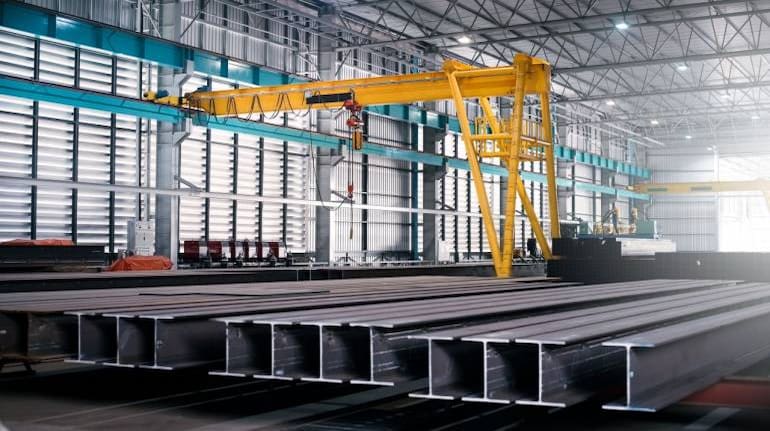



Tata Steel’s results for the September quarter, due later today, are widely expected to be poor. A Moneycontrol poll says the market is expecting a 70 percent decline in its consolidated net profit over a year ago, and a 60 percent decline sequentially. Its compatriot JSW Steel had announced results last week that support the possibility -- it reported an EBITDA of Rs 1,752 crore, down from Rs 10,417 crore in the year ago quarter and Rs 4,309 crore in the preceding quarter.
It appears that FY23 is headed for a spectacularly disappointing year for steel companies. The impact on cash flows is also quite visible.
It’s a tough operating environment out there. The global economy is slowing, never good news for steel. A combination of factors that had sent steel prices soaring is no longer in hold and instead global factors are combining to send steel prices down. And nothing hurts steel companies like falling prices, even rising raw material prices can be managed as long as prices are moving up commensurately. China’s slowing economic growth and a recent trend of improving steel output is also a risk to prices that will continue to play out in FY23.
But these are external factors and the steel industry is no stranger to downward cycles. The industry has also consolidated in India, with stronger players such as Tata Steel, JSW Steel and ArcelorMittal buying out weaker players. The government has been auctioning iron ore and coal blocks, and companies are building raw material supply lines that support their expansion plans. Eventually, the cycle will turn and the situation will improve.
But there’s one puzzle. In crude oil, the government had imposed a windfall cess, but as prices fell it cut this cess and then increased it when crude oil prices sprang back. The government had also imposed a 15 percent export duty on steel, with a view to ensuring availability of steel for domestic consumption. It’s having a telling effect on domestic steel prices and exports. In effect, what this does is a tonne of steel fetches Rs 100 in the export market, the Indian company will get only Rs 85.
Now, this may have made sense when steel prices were going through the roof, but they have fallen since. An ICICI Securities report points out that JSW’s standalone blended realisation is down by Rs 12,000 a tonne sequentially, on the back of falling domestic prices, lower export realization and repriced contracts. But the government is making no move to remove the export duty and it appears the industry is resigned to this duty being there.
An obvious response to the situation would be to sell more in the domestic market, if exports were not as remunerative. In fact, for Indian steel companies, it’s the domestic market that’s been more profitable relative to exports. Exports are used tactically to manage the domestic supply situation and to take advantage of price spikes—a surge in steel exports due to skyrocketing prices is what caught the government’s attention and resulted in the export duty levy. While steel companies have no problem selling in the domestic market, the levy creates two problems. First, less exports mean more domestic supply.
Second, a lower export realisation means domestic buyers hold a bargaining chip. If Rs 100 was the earlier international benchmark, now it has become Rs 85. Thus, domestic prices may continue to suffer from the export levy. The government is indirectly a large buyer of steel for infrastructure projects. It may have understood that domestic steel used to trade at a premium to import parity prices because of reasons such as duties and logistics. But the levy has eaten into that premium. Other steel buyers will not be complaining either. But if the export levy overstays its welcome, it will reset margin expectations for domestic steel companies and also how investors value steel companies. That’s the long-term imponderable after investors get over the shock of seeing steel margins crumble this fiscal.
How to be bullish (republished from the FT)
Out of ideas, is AAP struggling to stay politically relevant?Technical Picks: USD-INR, Larsen and Toubro, GAIL, Max Ventures, Maruti and Zinc (These are published every trading day before markets open and can be read on the app).
Ravi AnanthanarayananMoneycontrol ProDiscover the latest Business News, Sensex, and Nifty updates. Obtain Personal Finance insights, tax queries, and expert opinions on Moneycontrol or download the Moneycontrol App to stay updated!
Find the best of Al News in one place, specially curated for you every weekend.
Stay on top of the latest tech trends and biggest startup news.